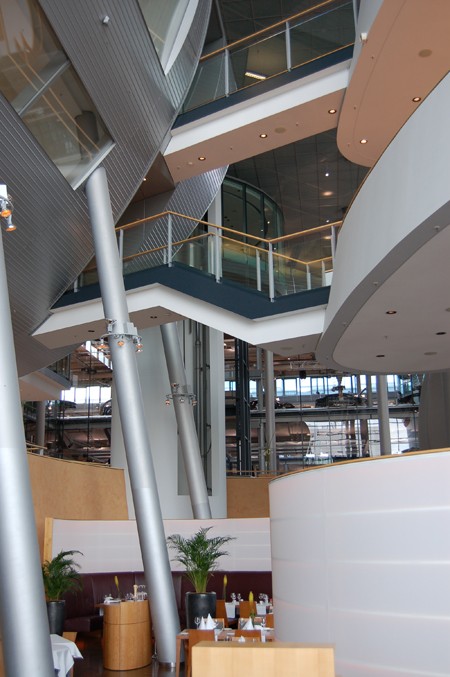The unrivaled library and research support offered by CASVA and the National Gallery of Art has given me the rare opportunity to work on two major projects simultaneously.
The first is a monograph surveying German architecture from unification in 1871 to reunification in 1990. There is a fine CASVA precedent, as Rudolf Wittkower most likely worked on the third revised edition of his great survey Art and Architecture in Italy, 1600–1750 when he was Kress Professor in 1969–1970. Since Wittkower’s day, however, the field has changed beyond recognition, particularly in the burgeoning ease of access to vast amounts of data. In the case of German architecture, for example, obscure journals like Zentralblatt der Bauverwaltung or Wasmuths Monatshefte für Baukunst, which were formerly accessible only in specialist libraries, are now available online in their entirety.
If it were focused primarily on the architectural avant-garde, the survey would be a straightforward task. This account, first mapped out by Nikolaus Pevsner back in the 1930s, is well established. In spite of its age, the simple tale of a functionalist imperative that ran from the Deutscher Werkbund to the Dessau Bauhaus and on to postwar modernism is still taught in virtually every school of architecture. It is no longer supportable, however, and the frame of my project extends beyond the acclaimed heroes of the modern movement—Peter Behrens (1868–1940), Bruno Taut (1880–1938), Walter Gropius (1883–1969), and Ludwig Mies van der Rohe (1886–1969)—to embrace the unheralded and forgotten architects of the mainstream. This is no simple task. The confluence of an information avalanche with the collapse of long-established readings or interpretations makes great demands on selection and narrative construction. Big data demands strong narratives: as Wittkower said in the foreword to the second edition of Art and Architecture in Italy: “. . . the text is meant to stand on its own and be perused by those who want to read a coherent narrative rather than use a textbook.”
The second major project is the preparation of an anthology of texts on the pan-European reception of US art over the period 1945–1990, to be published under the editorial management of the journal Art in Translation. Postwar art in the United States—abstract expressionism, Pop, minimalism, earth art, and other forms triggered wildly differing responses across Europe. There was no single European discourse, as reactions were politically and socially mediated in various national and cultural contexts. To frame the project, a small expert group met in Washington
The preeminence achieved by US art in postwar Europe is a topic already addressed in the individual contexts of France, West Germany, and the UK. No study yet exists, however, that surveys the reception of art made in the USA across all the European nations, including the Soviet Union and its satellite states. Thanks to its wide networks of advisors and translators, the anthology will help fill this lacuna. When published it will assuredly stimulate a major reevaluation of the impact of postwar US art in Europe.
